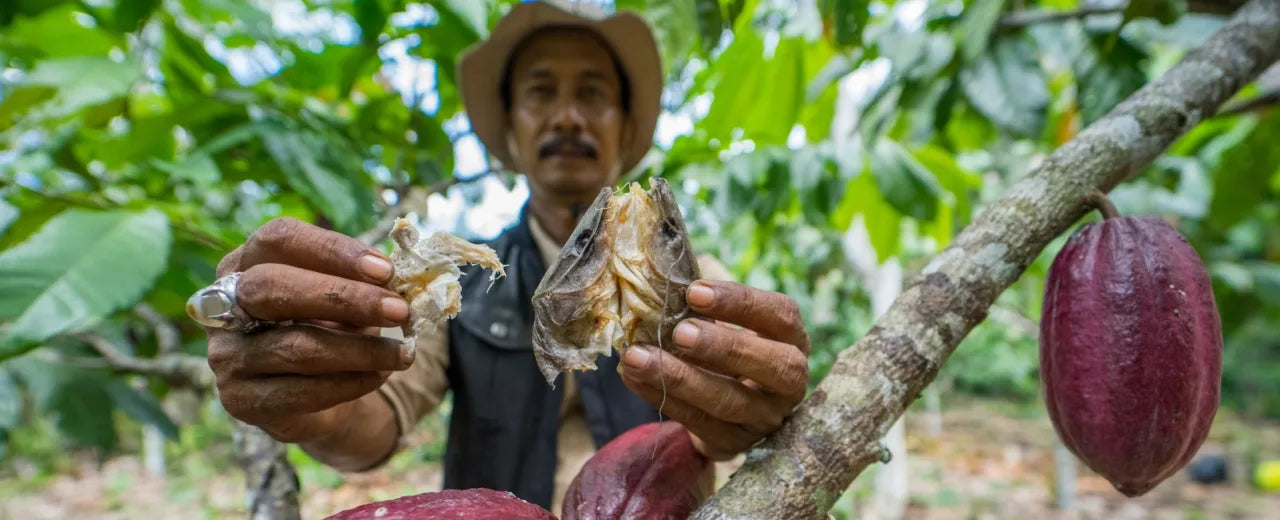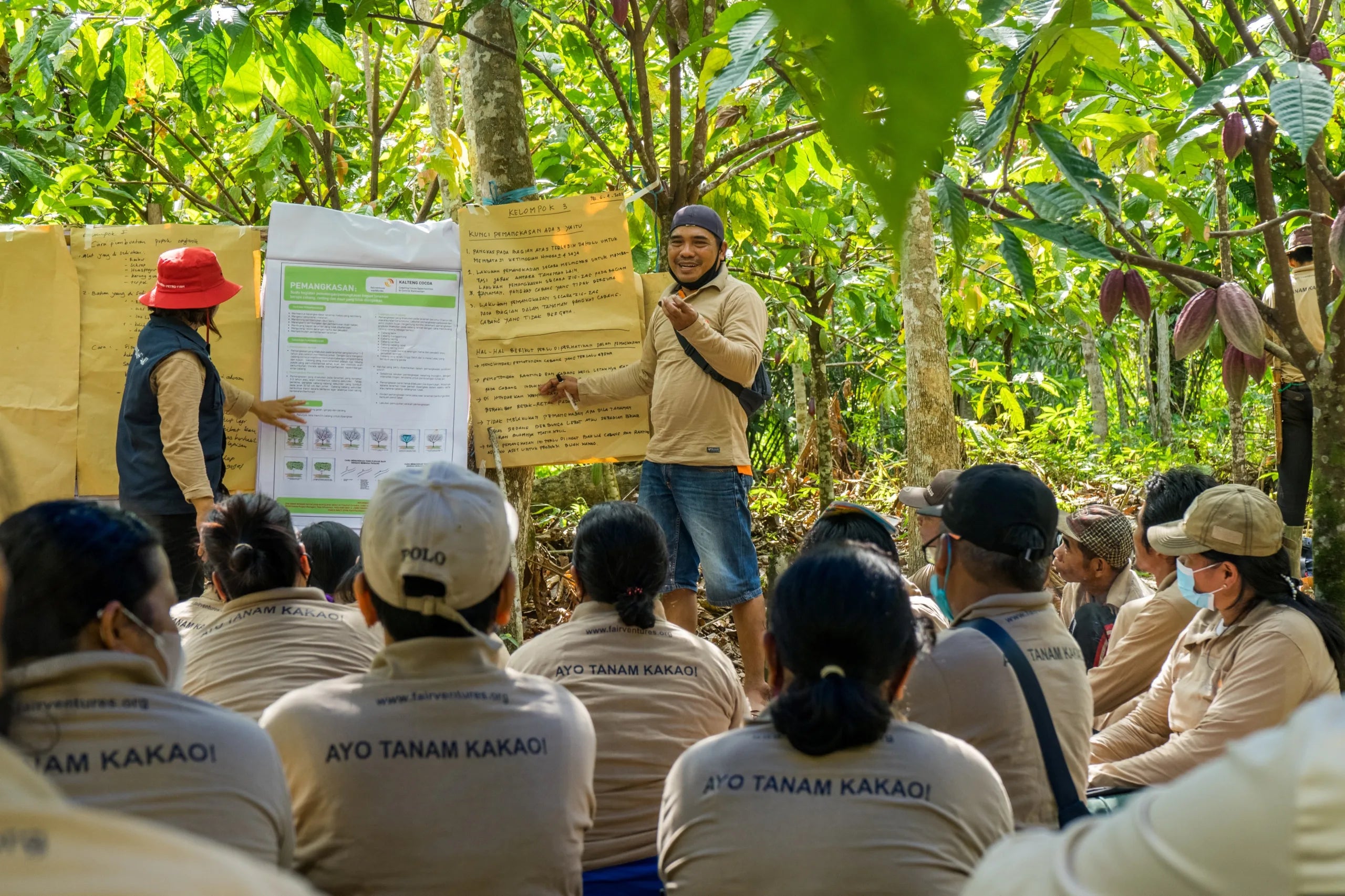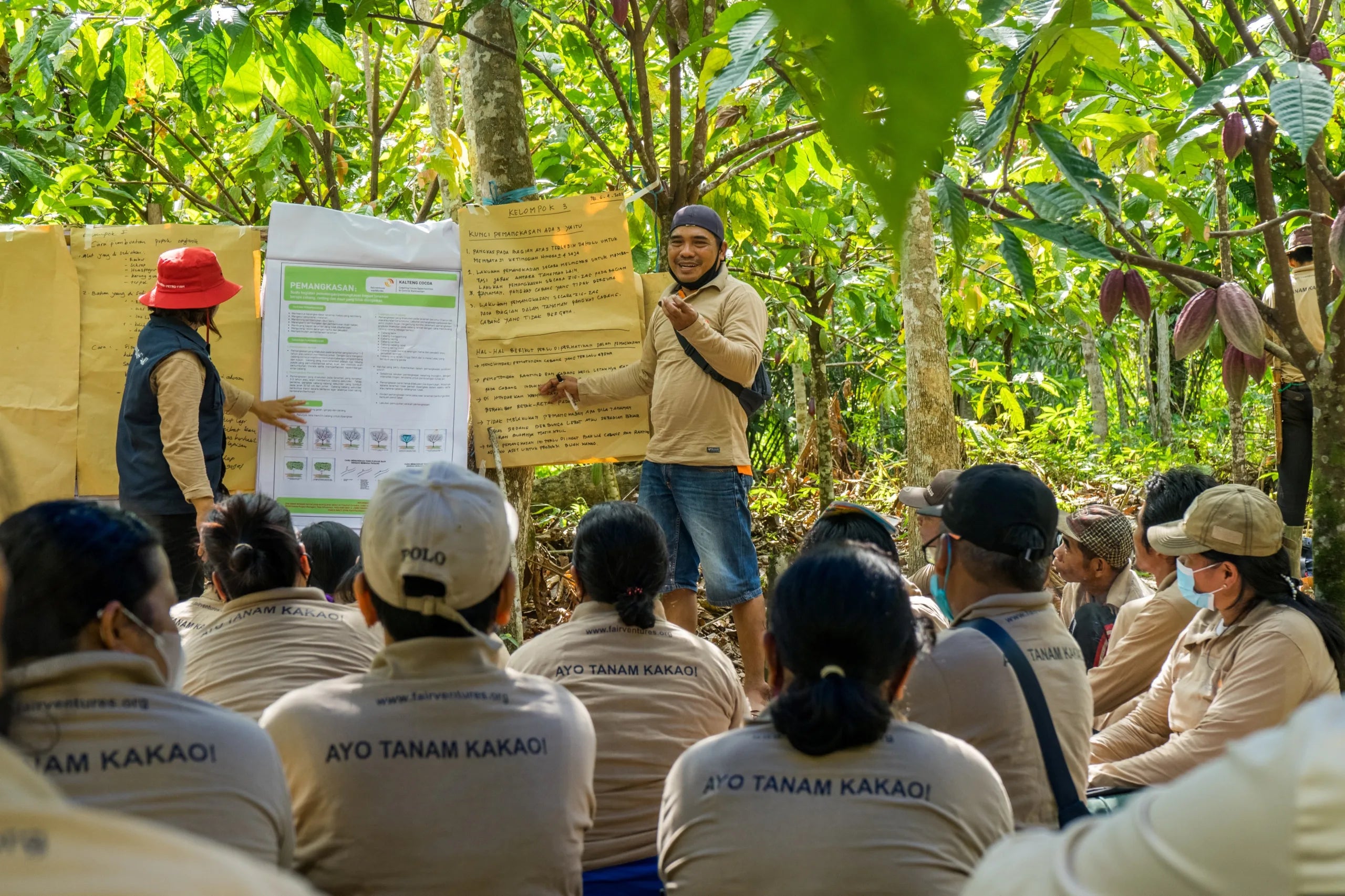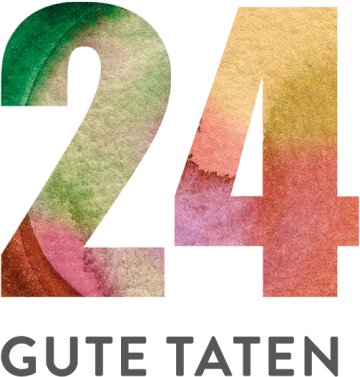Day 15
5 minutes of training for cocoa farmers in Indonesia
 Increase your income through training
Increase your income through training


Planting and caring for cocoa trees properly and harvesting high-quality cocoa beans

Nina from Indonesia presents her favorite project
need
Further training for cocoa farmers in Borneo
activity
Local trainers provide cocoa farmers with knowledge on growing cocoa in the agroforestry system
Measurable performance
Number of smallholder farmers trained
Result
50 cocoa farmers were trained to grow cocoa in the agroforestry system
Systemically relevant impact
Improved income for cocoa farmers and their families as well as protection and enhancement of the land used through agroforestry practices
background


The good deed
AboutIndonesia
Jakarta
Capital city
275,501,339
Population
4,788.0
Gross domestic product
per capita per year
0.705
Human Development Index
(Human Development Index)


